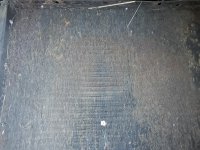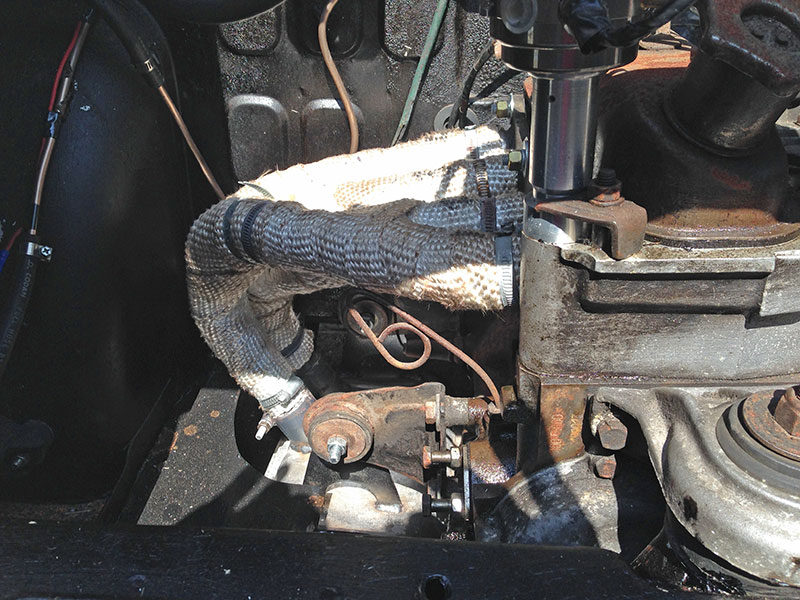Connie's rad looks factory fresh, I think the previous owner replaced it not long before we bought her 19 years ago at 70k miles. In the few years we had her on the road we clocked up another 10k and the over heating in traffic was a regular problem - hence looking at adding the electric fans as part of the rebuild.
Getting a full height photo of the block wasn't easy but here's a couple of photos to give an idea (one showing the heat tape on the 4-branch exhaust).
As far as I'm aware the head has never been removed. It's on my to do list as there is a very slight oil weep on the exhaust side - only noticeable because I cleaned the engine before refitting.
The second image also shows the blanking plate for the old fuel pump. I kept the original bolts just in case I had to refit the pump... best place not to lose them was in situ.




